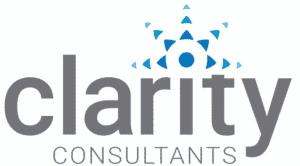Today, companies are facing a slew of new challenges. Skill gaps have long been a burden for employers, making it difficult to secure the capabilities they need to accomplish their goals. There’s also a growing talent shortage, making it even more difficult for organizations to avoid staffing shortages and maintain full productivity.
Additionally, many professionals have different expectations of employers now. Along with competitive compensation, a positive, supportive culture featuring a diverse workforce is increasingly viewed as essential.
Along with skill gaps and talent shortages, many organizations are still adjusting to the workplace approaches created by the pandemic. Many companies rapidly embraced remote work in response to the pandemic, a strategy that wasn’t inherently part of their workplaces before COVID-19. As a result, leaders weren’t necessarily trained in managing a distributed team beforehand, leaving them feeling ill-equipped to guide remote employees and promote success.
In order to promote growth and support productivity, companies need to update their leadership training to address the challenges of today. Otherwise, they’ll struggle to remain ahead of the competition both now and into the future.

How to Keep Your Leadership Training Current
Keeping your leadership training current takes effort, but it isn’t as challenging as it appears on the surface. Often, the biggest key is to continuously assess your workforce and company goals. By doing so, you can identify potential skill gaps or talent shortages, allowing you to create a plan for addressing those needs internally. When you analyze your workforce, you want to explore available skillsets, even if employees aren’t currently using a capability in their role today. By knowing what’s present, you can determine if a perceived skill gap is correctable by adjusting duties or tapping existing talent. Additionally, you want to focus on potential. By identifying top performers with the interest and capacity to acquire new capabilities, you can outline who may be the perfect candidates for upskilling. Then, compare what’s available to your company’s needs. Review daily duties, upcoming projects, new implementations, and other aspects of your operations to find skill areas worth pursuing. Once you understand your training targets, you’ll need to create new coursework and determine its distribution. You’ll work with your learning and development (L&D) team or provider to craft modules that address the critical skills and knowledge. Then, you’ll choose the employees that will take part. After figuring out who’s participating, you can determine which delivery mechanism is best. Often, a micro-learning approach that embraces a range of modalities and uses an eLearning platform is ideal. It allows you to deliver the information in bite-sized chunks, making it easier to complete modules and retain information.Are You Ready to Update Your Leadership Training to Keep It Current?
Often, keeping your leadership training current is an ongoing process. As a result, you may need a reliable team of L&D experts to simplify the updates, ensuring you can keep your training up-to-date with ease. At Clarity, we have nearly 30 years of experience in L&D, giving us the knowledge and expertise to update your coursework efficiently. Plus, if you’re trying to expand your internal L&D team, Clarity can be your candidate search ally, connecting you with top talent right when you need them. If you want to partner with leading L&D professionals, Clarity Consultants is here. Contact us today.
